Lugares de interés (POIs) del Mapa
5: Venice
In 1271, when Marco Polo was 17, Pope Gregory the X sent letters and gifts to the Polos asking that they be delivered to the Great Khan. Nicolo and Maffeo Polo, Marco’s father and uncle, had recently returned from a trading journey on which they met Kublai Khan. He requested that the Pope send missionaries to teach Christianity to his people. Marco accompanied his father and uncle when they set out for Mongolia.

Más sobre Venice
6: Jerusalem
While visiting the court of Kublai Khan on a trading journey, Marco Polo’s father and uncle were directed by Kublai Khan to travel to Jerusalem and return with the oil that burned in the sepulcher of God. They went home to Venice first where they acquired the items to be delivered from the Pope. This ended up taking longer than anticipated when the Pope died. The Polos waited for a new Pope to be appointed and then set out for Jerusalem as they had promised Kublai Khan. Marco Polo joined the expedition. After obtaining the sacred oil, Marco Polo accompanied his father and uncle back to the court of Kublai Khan in Mongolia.

Más sobre Jerusalem
7: Beijing, China
In 1274 the travelers reached Cathay, China. Marco Polo arrived in the capital Daidu (Beijing) where his father and uncle renewed their acquaintance with Kublai Khan and presented him with the papal letters and sacred oil. They were given important positions in his court. Marco studied Chinese.
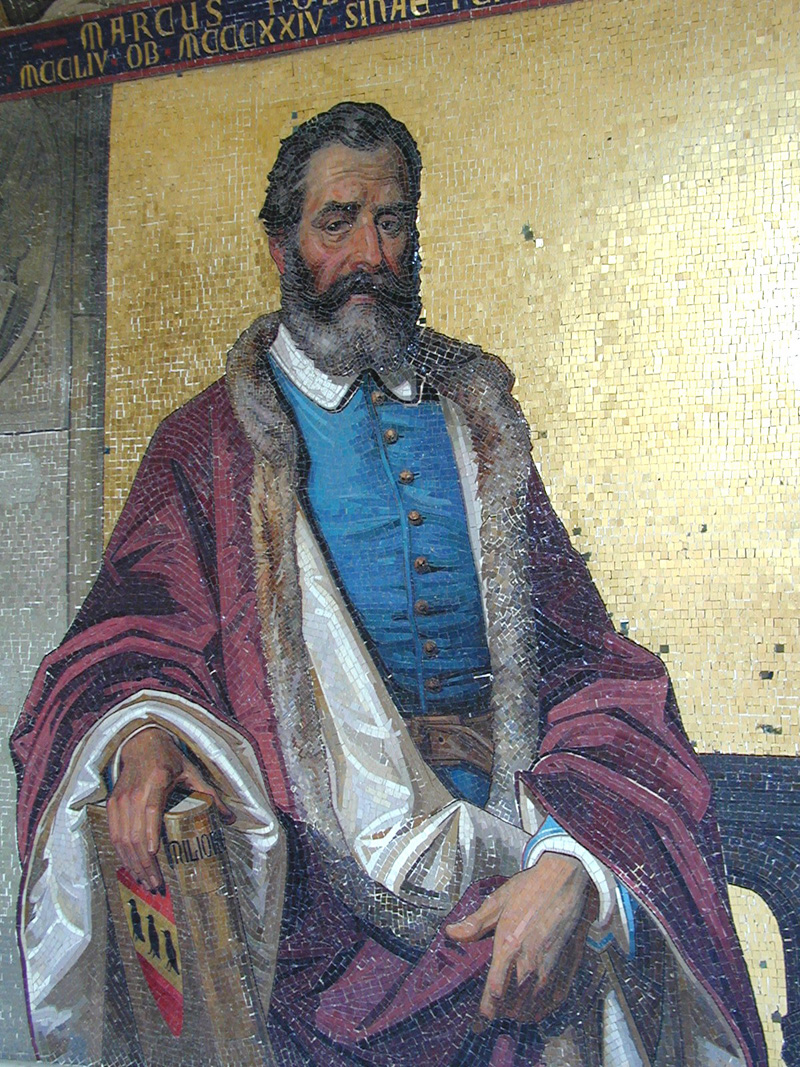
Más sobre Beijing, China
8: Hangzhou, China
The Polos spent the next 17 years in China. Kublai Khan took a liking to young Marco Polo and sent him on a diplomatic mission throughout the empire. In 1288, Marco was appointed governor of the city of Yangzhou for a term of 3 years.

Más sobre Hangzhou, China
9: Ilkhanate, Persia
In 1291, Kublai Khan sent the Polos to escort a Mongolian Princess to her betrothed in Persia. They traveled by sea from the Chinese port city of Quanzhou to Sumatra, Sri Lanka, India and finally to Persia. They stayed to celebrate the wedding and then headed to the Black Sea to make their way back to Venice.

Más sobre Ilkhanate, Persia
10: Venice
The Polos returned to Venice in 1295. Marco Polo was made captain of a ship which joined in the battle between Venice and Genoa. Marco was captured and imprisoned in 1298. While in prison Marco Polo dictated to a fellow prisoner the details of his journey to China. The resulting book became a huge success in Europe. After his release from prison, Marco Polo returned to Venice where he married and had three children. He died at the age of 70.

Más sobre Venice
14: Haiti
Pizarro's first expedition was in 1509 when he signed on as first mate on a ship captained by Balboa. On this expedition he journeyed across the Isthmus of Panama and discovered the Pacific Ocean.

Más sobre Haiti
15: Inca Captial
In 1532 Pizarro embarked on his last expedition. He took a huge army and lots of supplies to go back to the Inca city. There he laid siege to the city and wiped it out, massacring the unsuspecting Indians, but he managed to capture the Inca ruler Atahualpa. He set a ransom for the ruler at a room of gold plus the same room filled two times with silver. The Incas agreed and paid the ransom, but Pizarro killed Atahualpa anyway.
He took possession of the remaining Inca territory and sent his closest friend, Almagro, to push south and claim Chile. Almagro defeated the city of Cuzco but was taken prisoner and executed in July, 1538.
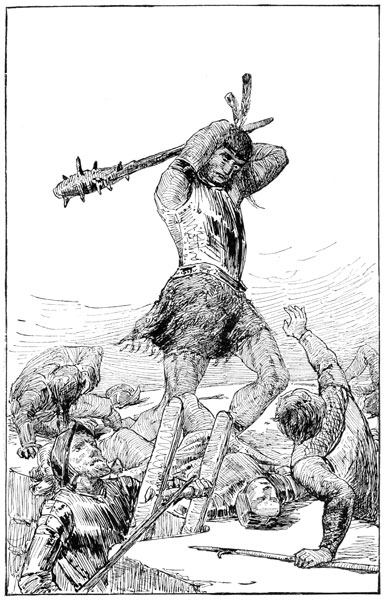
Más sobre Inca Captial
16: Lima, Peru
In Lima, Peru on June 26, 1541, Francisco Pizarro was murdered by Almagros son who wanted revenge for his father’s death which he blamed on Pizarro.

Más sobre Lima, Peru
17: Panama
In 1522 tales from the travels of Cortez spread news about the countries situated along the shore to the south. Enthusiastic about the possibilities, Pizarro joined with Diego de Almagro, a soldier of fortune and a Spanish clergyman named Lugue to conquer the lands south of Panama. Their goal seemed so unattainable that the people of Panama called them the “Company of Lunatics.” They sailed down the coast of western South America. There they went inland a little ways and found evidence of the Inca Empire and gold. Pizarro returned to Panama with the news.

Más sobre Panama
18: Spain
Back in Panama Pizarro made plans to sail to Spain in order to inform the King and get funding for more men and provisions for crops and other foods that were not abundant in Panama. Thrilled by the news of gold, the King appointed Pizarro as the governor of Peru, the name he had given the land. Pizarro sailed back to Panama, where he made plans for a long expedition and war with the Incas that would make him the ruler of Peru.

Más sobre Spain
19: Trujillo, Spain
After years of pig herding Pizarro moved to the West Indies (to what is now Haiti) in 1502 where he lived with his father's brother. Pizarro was fascinated by the tales he heard from sailors returning from expeditions to North and South America. Pizarro eagerly signed on to sail with those captains heading to unknown lands.
Click here for video

Más sobre Trujillo, Spain
20: Tumbez
Pizarro and his men returned to the location where they had first discovered the Incas. This time Pizarro went deep into the land but did not find any signs of Incas, so he traveled along the coast to the city of Tumbez. Then he turned inward towards the Inca Empire. There he was invaded by a large Inca army. Many of his men were lost in the battle and many provisions and maps they had made were lost. Defeated, Pizarro and his men returned to their ships and set sail back to Panama, realizing that the Incas were very powerful.

Más sobre Tumbez
28: Cempoalla, Mexico
Cortez had some soldiers amongst his men who were starting to turn against him and were being more loyal the governor of Cuba. They were planning to escape and go back to Spain. In order to prevent the mutiny, Cortez sank his ship. Cortez then proceeded to march his men into the interior, to the territory of the Tlaxcalans. After two weeks of fighting, Cortez discovered that the Tlaxcalan Indians were resolute enemies of the Aztecs who treated them as slaves. Cortez thought they might join him in a military alliance to help conquer the Aztecs. The Tlaxcalans became his strongest allies and joined Cortez on the invasion in to Mexico increasing his numbers significantly.
Más sobre Cempoalla, Mexico
29: Cholula, Mexico
While Cortez was exploring and conquering the Aztecs, his past actions began to catch up with him. The governor of Cuba sent a force to find Cortez and arrest him. April 1520, Cortez was informed that the arresting party had landed in Mexico. Realizing that he would be found sooner or later, he gathered his forces and set out to meet the expedition. He left about 200 men in Tenochtitlan, and appointed Pedro de Alvarado to lead them in his absence. Cortez over powered the arresting party by entering their camp at night and capturing the leader. Most of the remaining party members willingly joined Cortez when they heard tales of gold mountains.
Más sobre Cholula, Mexico
30: Jalapa, Mexico
The Tlaxcalans marched with Cortez to Cholula, 20 miles from Tlaxcala. A story spread from the Tlaxcalans to Malinche, the woman translator who traveled with Cortez, that the Aztecs at Cholula were planning to trap Cortez inside the city and massacre his army. When the Cholulan leadership and many of their warriors gathered, unarmed, in a great enclosure by the pyramid temple of Quetzalcoatl, the Spanish and the Tlaxcalans killed them. For this reason and because of his white skin, the Aztecs believed Cortez was actually the god.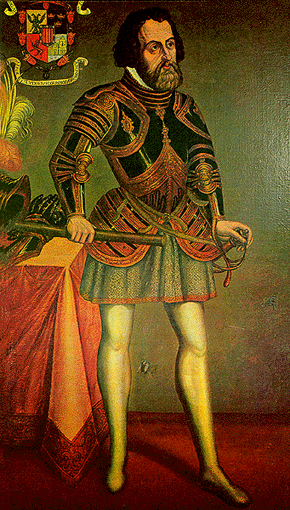
Más sobre Jalapa, Mexico
31: Medellin, Spain
Medellin, Spain is where Cortez started his expedition. The governor of Cuba had asked Cortez to lead his army to war. If Cortez accepted this offer the governor would provide 2 or 3 ships with which he could cross the ocean to Mexico, to fight the Aztec Indians. The governor told him this because he had heard myths that there was treasure about to be discovered, and he wanted to be the first one to find it. Cortez accepted the offer and the governor of Spain provided everything he needed for his journey.
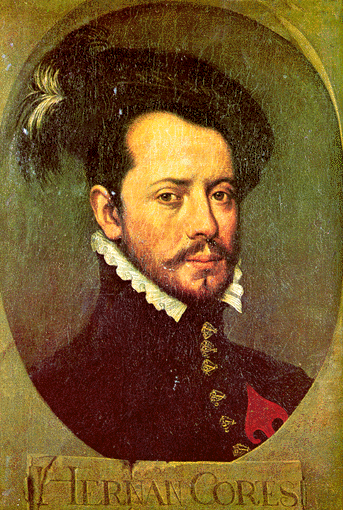
Más sobre Medellin, Spain
32: Tenochillan, Mexico
When Cortez returned to Tenochtitlan, he walked into a revolt. In Cortez's absence, Alvarado, the man Cortez had left behind to keep order, treated the Aztecs very cruelly. Alvarado massacred hundreds of Aztecs at a religious ceremony, because he was afraid of a revolt. Instead, it was de Alvarado's actions that caused the revolt to start. When Cortez arrived, he was surrounded and attacked by the Aztecs. His force badly outnumbered, Cortez asked Montezuma to speak to the Aztecs and calm them. The result of this, however, was quite the opposite. Enraged Aztecs considered Montezuma a traitor, and stoned him to death. Cortez retreated from the city. Chased by Aztec warriors, the Spanish lost more than half of their men, and all of their cannons. It took Cortez almost a year, but he built up his forces once again and conquered every part of the Aztec empire--except Tenochtitlan. Finally, in May 1521, Cortez was ready for the final assault on the Aztec capital. When it was over, more than 40,000 Aztecs lay dead and the once-mighty Aztec Empire lay in ruins.
Más sobre Tenochillan, Mexico
33: Tlascala, Mexico
When Cortez arrived at Tenochtitlan on November 8, 1519, Montezuma, leader of the Aztecs, greeted him warmly and even kissed his hand. Cortez traveled with a translator, a woman named Malinche, which made it possible for communication between Cortez and Montezuma. After that initial meeting, Montezuma allowed the Spaniards to enter and establish a headquarters in a large unused building. Since Cortez behaved somewhat less regally than would be expected of a god, Montezuma began to have suspicions of his divinity. Hoping that a sizeable gift would make the Spaniards go away, he presented Cortez with gold and jewels. Unfortunately for Montezuma, his gift had the reverse effect. Not only did the gift fail to achieve its intended purpose, but it served to incite the Spaniards' greed. Cortez seized Montezuma as a hostage, hoping to gain wealth from a large ransom, and to forestall an Aztec attack.
Más sobre Tlascala, Mexico
34: Yucatan, Mexico
Cortez accepted orders from his governor and on the morning of February 18, 1519 set sail for Yucatan, Mexico. The journey from Cuba was only 120 miles from the Mexican coast. When Cortez landed in Yucatán, Mexico he saw structures like pyramids. On his arrival the Mayan Indians gave him a warm welcome. The Indians told Cortez, ‘‘We wish neither war nor trade. We have no more gold and you will be killed if you do not leave.'' Cortez ended the conversation with the deaths of 400 Mayan Indians.

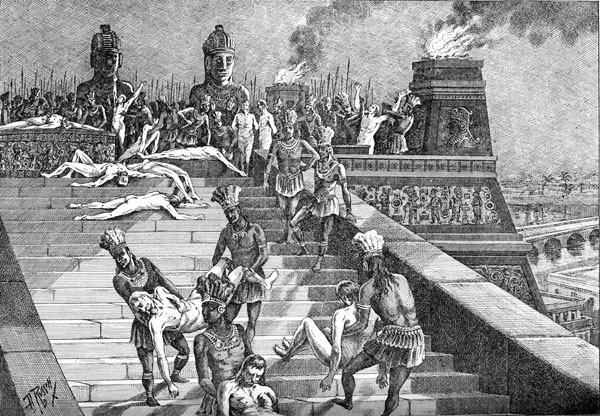
Más sobre Yucatan, Mexico
36: Darien, Panama
This part of Balboa’s journey was the most important and well known stop. In Darien Balboa climbed a peak and saw an ocean. Balboa became the first European to see the Pacific Ocean (he climbed this peak alone).
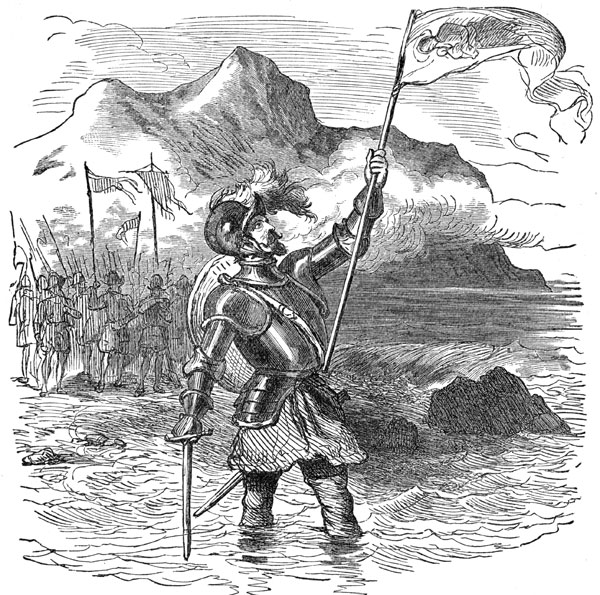
Más sobre Darien, Panama
37: Darien, Panama
At this point Vasco Nunez De Balboa has been arrested for treason against Spain and when he travels back to Darien, Panama Vasco Nunez, one of Spains greatest explorers was publicly executed (be-headed).

Más sobre Darien, Panama
38: Hispanolia
When Balboa came to the shores of Hispaniola he decided he wanted to stop here and farm for a while. After ten years his attempts at farming produced debts, so he joined a crew and left Hispaniola to go to San Sebastian.
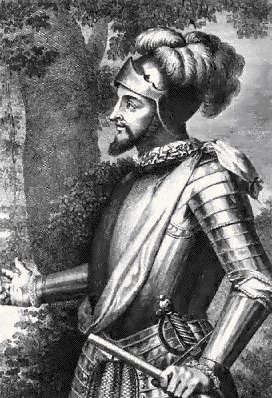
Más sobre Hispanolia
39: Jerez de los Caballeros, Spain
Jerez de los Caballeros was Vasco Nunez de Balboa’s birth place and spent many years there. Balboa wanted to explore and when he bumped into Rodrigo de Bastidas they decided to sail to Hispaniola.

Más sobre Jerez de los Caballeros, Spain
40: Pearl Islands
From Darien Balboa sailed to the Pearl islands were he found a fortune in pearls (this is how the Pearl islands got their name today). Also in his party was a man named Francisco Pizarro, who conquered the Incas of Peru where Balboa had ventured earlier.

Más sobre Pearl Islands
41: Peru
In Peru Vasco found a fortune in gold and slaves. Also in Peru Balboa explored the dense forests and continued his expedition west.
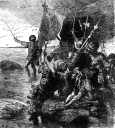
Más sobre Peru
42: San Sebastian
After his trip to Hispaniola gathered debts Balboa joined a crew to sail to San Sebastian as part of his expedition southwest. When they arrived they found it had been burned to the ground. He convinced the leaders of the expedition, Nicuesa and Encisco, to continue southwest.

Más sobre San Sebastian
47: Discovering Markland
Sailing on, Eriksson found another island that was flat, with white sand and some trees. This island contained small, thick forests. It was definitely more interesting than Helluland, but not what he was seeking. Markland today is believed to be Labrador, Canada.

Más sobre Discovering Markland
48: Finding Helluland
When Leif saw land, it was not what Hergelfson had described. The land was like a huge flat rock, which stopped where large great mountains of ice began. It was a land entirely devoid of good qualities. Before sailing away, Eriksson named this Helluland. Today this is believed to be Baffin Island, Canada.

Más sobre Finding Helluland
49: First Journey from Brattahlid, Greenland
It was the year 1000 when Leif Eriksson, age 24, left Greenland and went to Norway to bring gifts to King Olaf. Leif was eager to plan his journey and set sail, and was determined to make sure his first mission was successful.

Click here to view Video
Más sobre First Journey from Brattahlid, Greenland
50: Restless in Greenland
Leif returned to Greenland, and became restless. He recalled a story that a man named Bjarni Hergelfson told him about his journey through an unmapped area. Thinking he was in a new part of Greenland, Hergelfson discovered the land was covered in trees, not glaciers. He was not in Greenland, but a “New World”. As Leif remembered this story, he became eager to follow Hergelfson’s trail. He bought Hergelfson’s boat, and went to find this new, strange, land.

Más sobre Restless in Greenland
51: Returning to Greenland
On the return journey to Greenland, Leif was given the nickname “Leif the Lucky”, for his great success of good travel and wealth. Once he did return home, he became very well known, and spread Christianity throughout Greenland. He never did return to Vinland. Leif stayed in Greenland until his death 1020.
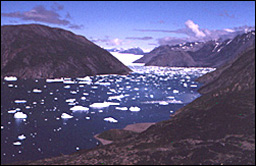
Más sobre Returning to Greenland
52: Trondhjem, Norway
When Eriksson and his crew arrived in the first capital of Norway, Olaf was very pleased and impressed with Eriksson. Leif was asked to stay in Norway. King Olaf introduced Leif to the Christian religion, in which he became very interested. Never faithful to the Viking gods, Eriksson agreed to be baptized, and was going to return to Greenland to spread this new religion.

Más sobre Trondhjem, Norway
53: Vinland at Last!
After a few days, Leif found land once more. He discovered the wondrous land Hergelfson had spoken of! There were rich forests, deep, lush, pastures, and salmon-filled rivers. Wild-grapevines were bountiful, and helped this land be properly dubbed Vinland, or “Wineland”. Eriksson was very excited, and decided to start settling this land. He couldn’t wait to return to Greenland to share the news of Vinland!

Más sobre Vinland at Last!
59: Calicut, India
Vasco da Gama traveled from Portugal to Calicut, India looking for spices and riches. He had accomplished what everyone thought was impossible by sailing to India and establishing the trade route through the Indian Ocean. This was his last stop before he went back to Portugal. He later returned and bombarded Calicut. He died from a rare Indian disease. He was returned to Portugal for his burial.

Tomb of Vasco da Gama in Lisbon, Portugal
Más sobre Calicut, India
60: Cape Of Good Hope
Vasco passed the Cape Of Good Hope on November 22. Then he headed for the coast of Natal on Chrismas Day.
Más sobre Cape Of Good Hope
61: Kilwa
The big fleet coasted to Kilwa. Vasco da Gama and his men didn't stay very long before moving to another place.

Más sobre Kilwa
62: Lisbon, Portugal
Lisbon, Portugal is where Vasco da Gama started his adventure. He and his men sailed July 8th, 1497 looking for spices, goods, and riches.

Más sobre Lisbon, Portugal
63: Sofala
Sailing in Febuary 1502, the fleet made its first port of call at the port of Sofala on June 14.

Más sobre Sofala
64: St. Helena Bay
On Tuesday, November 7 Vasco da Gama and his men landed on St. Helena Bay. They found that it was low. As they anchoedr their ships in the bay Vasco recorded that the water was crystal clear.

Más sobre St. Helena Bay
65: Raleigh's Path
This is the path that Raleigh took as he explored the New World.
Más sobre Raleigh's Path
70: Hayes Barton, Davonshire, England
Sir Walter Raleigh was a British explorer, historian, and poet, who was born around 1552, in Hayes Barton, Devonshire, England. He led an extremely interesting life. He was very brave, and is known well for his expeditions. He is most famous for the settlement of Roanoke Island, Virginia.

Click Here For A Video On The Lost Colony
Más sobre Hayes Barton, Davonshire, England
71: Hayes Barton, England
After Raleigh’s exciting journey to El Dorado, he returned to England. When he arrived, he was beheaded because he had attacked the Spanish during his travels. His head was sent to his widow, who had it embalmed, and kept it until her death.

Más sobre Hayes Barton, England
72: Jarnac, France
When Raleigh was about seventeen years old, he went to Jarnac, France to fight for the Huguenots. The Huguenots were French Protestants, who were forced to flee France, due to religious persecution. The King of France was forcing his countrymen to be Catholic. The Huguenots did not want to be Catholic, or in other words wanted religious freedom. In England, the people there were also Protestants. Raleigh decided to help the Huguenots fight, because he supported them completely.

Más sobre Jarnac, France
73: Munster, Ireland
About 10 years later, Raleigh (who was a Protestant), went to fight against the Irish (who were Catholics). The Irish had enlisted the help of the Spanish and Italians to fight with them. A year after the battle, mid 1850, it was quite obvious that the English were going to win. But, that was not the case. Later that year, the Irish were indeed defeated by the English army. The war ended when the commander of the Irish army was killed in 1583.

Más sobre Munster, Ireland
74: Orinoco River,South America
In 1595, Raleigh decided to go to Venezuela, South America, in order to explore the Orinoco River. He was searching for El Dorado, which was claimed to be “The City of Gold.” Raleigh had several goals for his expedition. He wanted to find the City of Gold, and he wanted to possibly create a new settlement there. Raleigh searched for a while, but never did find El Dorado. However, he was still convinced that there were some riches yet to be found in South America. He found gold in riverbanks and Indian villages. He also believed that there was enough gold to be mined in the northern part of South America. Unfortunately, he did not have enough tools or men to excavate it. Although he did not find El Dorado, Raleigh still considered his journey to be a success. He made valuable contacts with the Indians, and he thought that he had convinced them to ignore the Spanish, and accept any new English explorers.

Más sobre Orinoco River,South America
75: Roanoke Island, North Carolina
In 1584, Raleigh hired two explorers named Philip Amadas, and Arthur Barlowe on the first journey to the New World. Raleigh was hoping that the area for the new settlement would be somewhere in the Chesapeake Bay. He wanted this location because of the mild weather (unlike the more northern areas). Another reason for exploring was to find mineral riches. When the two men returned to England, Queen Elizabeth gave Raleigh a patent to explore all the lands that he could occupy. He then named this new land, Virginia, in honor of the Virgin Queen. Ralph Lane was sent as the leader of Raleigh’s second expedition. By the time that they got there, it was too late in the season for planting, and supplies were running short. To make matters worse, Lane (who was a military captain), alienated the Indians who were nearby, and murdered their chief over a stolen cup. Around 1856 Sir Francis Drake happened to visit the colony. Lane and his men had had enough, and Drake took them back to England. Ironically, a supply ship came to the island a week later. When the ship’s captain saw that the island was deserted, he left 15 of his men to stay there while he went to get reinforcements. Later, Raleigh sent 117 men, women, and children, to the colony to create a more permanent settlement.

Más sobre Roanoke Island, North Carolina